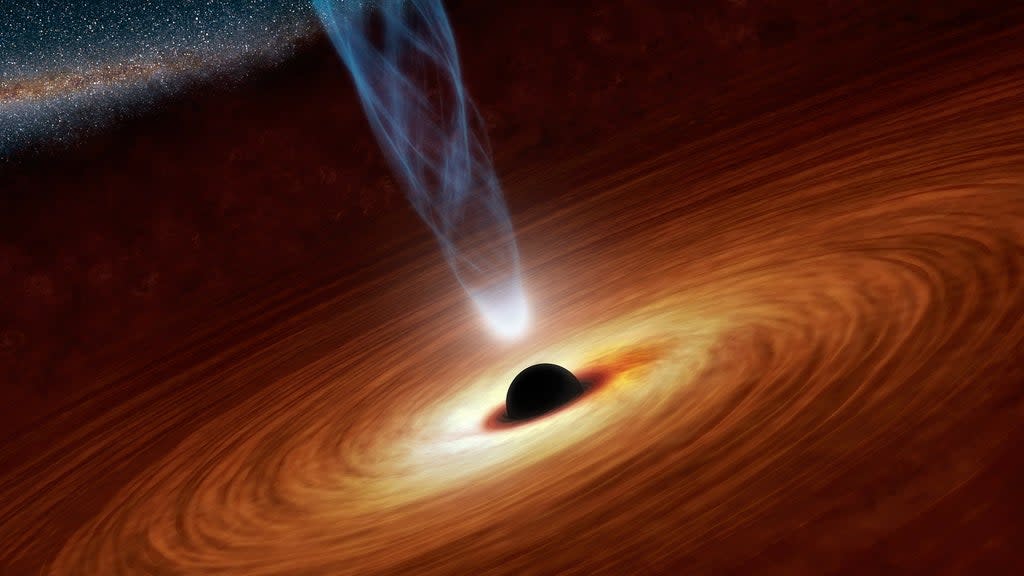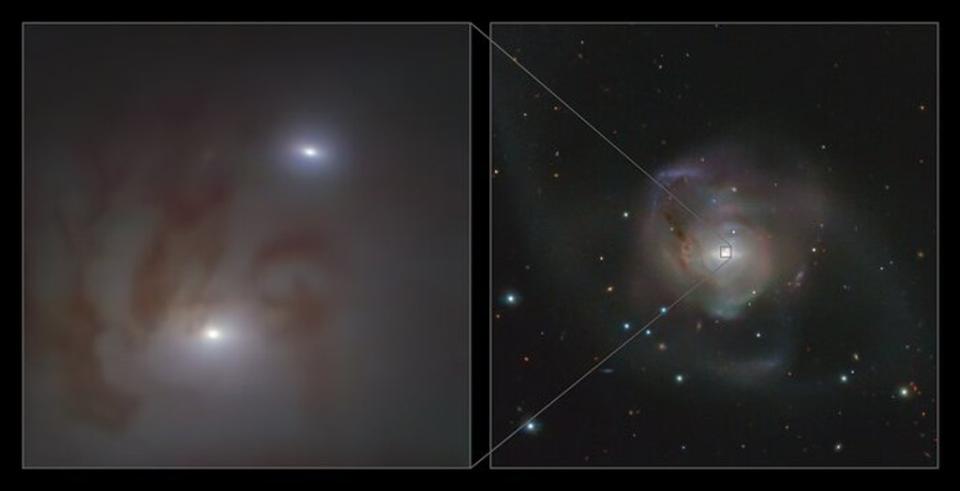Astronomers find Earth’s closest supermassive black holes – and they are merging into a ‘monster’

Astronomers have found a pair of supermassive black holes that are closer to the Earth than any previously discovered.
The duo are 89 million light-years from our planet in the constellation of Aquarius, more than 380 light-years closer than our next closest black hole pair.
The two black holes are also closer to each other than any other discovered, only 1600 light-years apart. Eventually, these two will merge into “one monster black hole, probably within the next 250 million years,” Holger Baumgardt, a professor at the University of Queensland, said.
These enormous wells of gravity have incredibly dense masses, which astronomers from the Strasbourg Observatory in France were able to measure by looking at how the stars around them were being manipulated.
The bigger black hole, located right at the core of a galaxy classified as NGC 7727, had a mass almost 154 million times that of the Sun; its companion, meanwhile, had 6.3 million solar masses.
Astronomers long-suspected that the galaxy had hosted two black holes, but they had not been able to confirm their presence until now. This is because the large amounts of high-energy radiation that would belie their existence is not visible to us.

“Our finding implies that there might be many more of these relics of galaxy mergers out there and they may contain many hidden massive black holes that still wait to be found,” says Karina Voggel, an astronomer at the Strasbourg Observatory.
“It could increase the total number of supermassive black holes known in the local Universe by 30 per cent.”
Experts suggest the search for similarly hidden supermassive black hole pairs is expected to make a great leap forward with ESO’s Extremely Large Telescope (ELT), set to start operating later this decade in Chile’s Atacama Desert.
Co-author Steffen Mieske, an astronomer at ESO in Chile and Head of ESO Paranal Science Operations, said: “This detection of a supermassive black hole pair is just the beginning.”
Additional reporting by Press Association
Read More
SpaceX starts testing Starlink internet service on flights
Russia and China attack US satellites with lasers ‘every day’ says general

 Yahoo Movies
Yahoo Movies 
